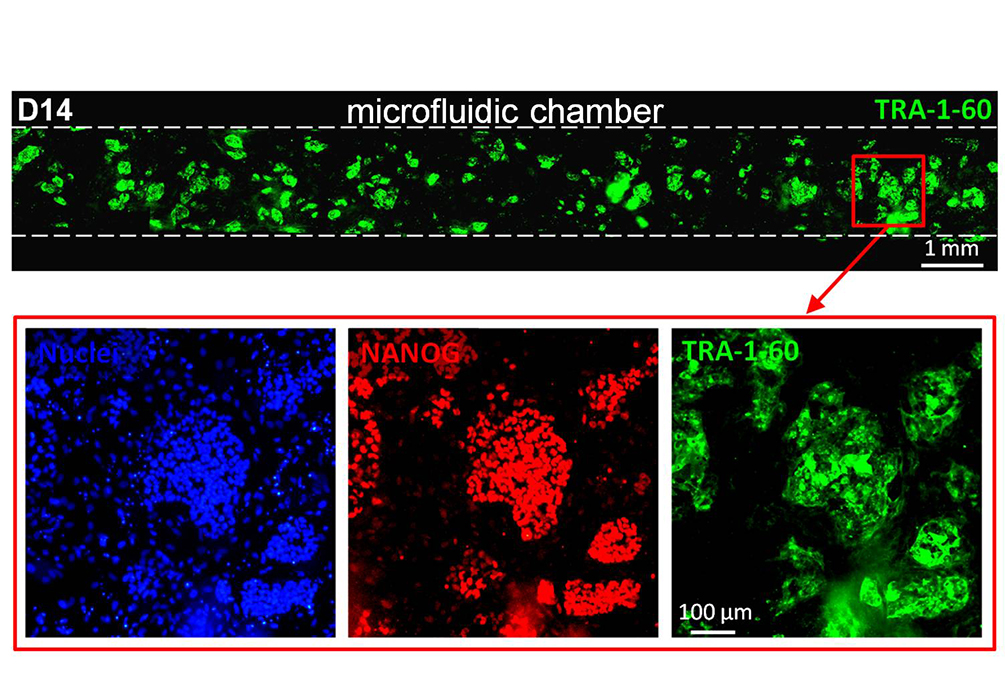Human induced pluripotent stem cells (hiPSCs) are embryonic-like stem cells derived from adult somatic cells by a reprogramming process. They have a number of potential applications in stem cell biology and regenerative medicine, including precision medicine. However, their potential clinical application is hampered by the low efficiency, high costs, and heavy workload of the reprogramming process.
Researchers from SIAIS Professor Nicola Elvassore’s lab developed an eight-day protocol based on daily transfections of mRNA encoding for reprogramming factors and immune evasion proteins. Using this protocol, they obtained up to 160 hiPSC colonies in a single 27-mm2 microfluidic chamber, 15 days after seeding ~1,500 cells, under xeno-free defined conditions.
The team recently published their research findings in the internationally renowned academic journal Nature Protocols under the title "Microfluidic reprogramming to pluripotency of human somatic cells."
The high success rate of reprogramming in microfluidics enables hundreds of cell lines to be simultaneously reprogrammed, using only ~300 μL in each independent microfluidic culture chamber. The hiPSC colonies can be extracted from the microfluidic chambers and do not require further stabilization because of the short lifetime of mRNA. Thus, they are ready-to-use for downstream applications.
The researchers from the Lab of Biological Engineering also adapted the methodology to a low-protein content medium to make possible basic biological studies of reprogramming mechanisms.
Overall, this system enables the generation of hiPSCs suitable for clinical translation and for further research into the reprogramming process.
This work was supported by a grant of the Natural Science Foundation of China (31601178).
Gagliano O*, Luni C*, Qin W, Bertin E, Torchio E, Galvanin S, Urciuolo A, Elvassore N. 2019. Microfluidic reprogramming to pluripotency of human somatic cells. Nat Prot 14:722–737.
Read more at: https://www.nature.com/articles/s41596-018-0108-4

Figure. Expression of pluripotency markers by hiPSC colonies at day 14 of microfluidic reprogramming from human fibroblasts.

